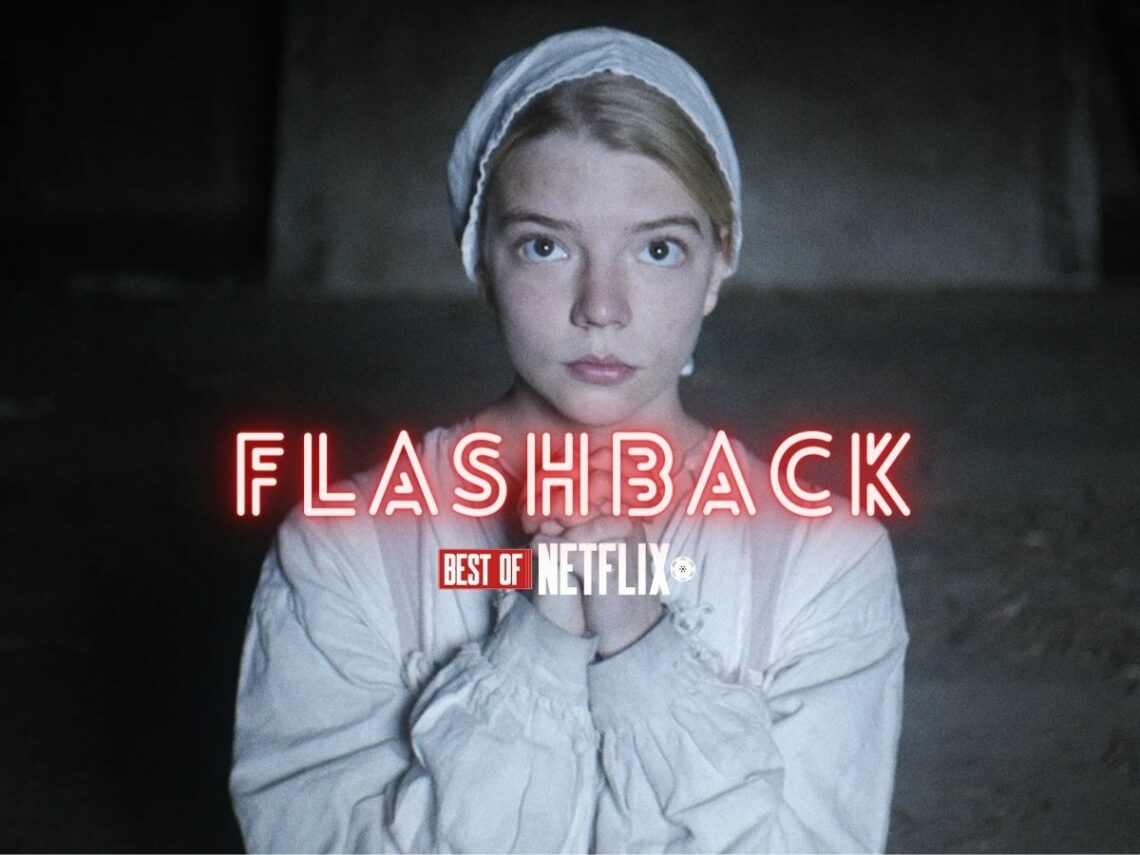Robert Eggers’ modern horror masterpiece The Witch is a deliciously moody exploration of superstitious beliefs and the intense paranoia they can breed. Eggers deftly crafts a haunting narrative heavily coded in occult symbolism bound to leave you with a sense of broody unease long after the credits have rolled.
The Witch, made with almost scholarly precision, is the perfect watch for those who love stories of witches and devils but through the lens of bigotry and psychological terror.
A very superficial read of the film has made it a darling among the modern-day anti-pagan and anti-witchcraft community. This curious co-opting of The Witch coincides with occultism’s global rise in popularity, especially in the post-pandemic era and the pushback it has faced from staunchly theist folks.
Join us on another Netflix Flashback as we look back at Robert Eggers’ The Witch.
What is Robert Eggers’ The Witch about?
The 2015 supernatural film delves into the world of the occult and horror in a 17th-century New England setting. The movie follows a devoutly religious Puritan family who are banished from their settlement. They must relocate near toweringly lonely woods, an intimidating visual representation of mystical boundaries and limitations in itself. Soon enough, one tragic incident after another befalls the family, and they believe the work of a malevolent witch is underfoot.
The Witch is a mesmerising exploration of the mundane horrors often spawned by barren isolation and religious fervour. Eggers draws inspiration from fairytales, mythologies, and historical events to vividly picture early American folklore and Puritan beliefs. The film captures the oppressive atmosphere of the era, where religious fanaticism and the fear of witchcraft were widespread.
The occult explorations in The Witch
From animal familiars like hares and ravens to rotten apples and black billy goats, The Witch is smattered with occult symbols that have been given dark and twisted meanings through superstition. But a closer look reveals a more layered interpretation of these tokens.
The ‘devil’ is presented as a ‘genius loci’, quite literally the presiding spirit of a place, not the Christian idea of the devil per se. He appears almost as a saviour to Thomasin, as a man in dark clothes, with a few tricks up his sleeve. He speaks through a horned beast but does not behave as the fallen angel Lucifer, aka Satan. But his understanding of the occult, traditional folkloric witchcraft, and the corruption of it in the consciousness of the masses goes deeper and is presented with further nuance in The Witch.
In a Reddit AMA session following the film’s release, Eggers had revealed his dislike for twist endings when one user thanked him for showing the witch throughout. But Eggers was quick to point out that his textual ambiguity was deeper than that.
Eggers left enough room for interpretation in The Witch, allowing viewers to question the true nature of the supernatural occurrences depicted in the film. In the same session, Eggers mentioned the possibility of ergot poisoning affecting the family’s gradual psychological decline.
He also doffed his hat to “real witches” and acknowledged the work of imagination behind their bastardisation in pop culture, folklore, and beyond.
Speaking of one particularly gory scene involving an old hag and baby entrails, Eggers noted, “Real witches still make flying unguents or ointments today w/o babies. The baby entrails detail was a cruel invention by the imagination of church, though believed to be true in the period. (sic)”
The seven deadly sins
The family at the centre of this story have seven members, each falling from grace after committing the seven deadly sins, even though Puritans viewed all forms of sinning as a step away from god.
Ralph Ineson delivers a powerful performance as the family patriarch, William, who repents for his pride. The unbaptised Samuel, who succumbs at the very start of the film, represents original sin. Kate Dickie plays Katherine, the wrathful and grief-stricken matriarch who cannot get over the loss of Samuel. Harvey Scrimshaw’s Caleb gives into a moment of lust and suffers for it. Mercy and Jonas not only embody envy and sloth but also hark back to the horror genre’s spooky obsession with twins.
The captivating Anya Taylor-Joy, in her breakout role as Thomasin, is the only family member whose name is a corruption of a Biblical name. She finally gives into gluttony and joins the coven of witches when the Black Phillip asks, “Wouldst thou like to live deliciously?”
Even this scene can be interpreted as an indication of a mass hallucination-induced chaos that destroys the whole family. In all his capacity, the devil offers Thomasin a pretty dress and the taste of butter, basic necessities that may have seemed like a luxury to a starving teenage girl who has just lost her whole family.
Eggers’ commitment to historical accuracy and his love for witchy lores is evident in every frame of The Witch. From the meticulously recreated costumes to period-appropriate dialogue, the film is immersive from the very first scene. But perhaps the most delicious of them all is the last scene, which was inspired by Luis Ricardo Falero’s ‘Witches going to their Sabbath’.
The Witch by Robert Eggers is streaming on Netflix.
